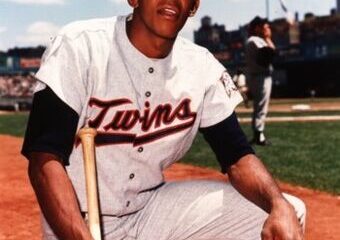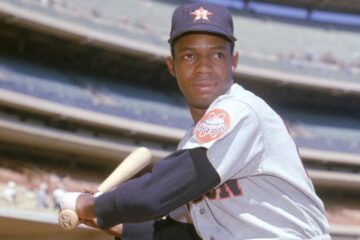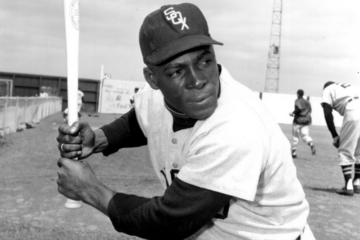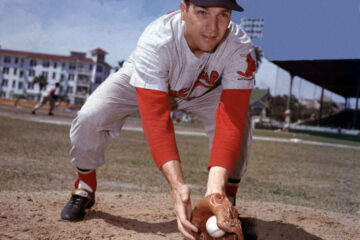The Hall of Fame Index: Who is the most qualified left fielder not in the Hall of Fame?
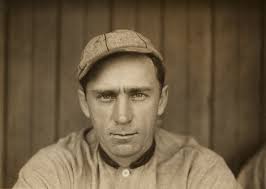
When we get into left field we get into one of those situations where we have to eliminate a couple of players from consideration. Barry Bonds might have the highest index score in baseball history. We covered him in great detail in the book. Manny Ramirez obviously also has the chops to get in, but his index score might not be as high as people think because of some shoddy defense. This leaves four other players with lesser fame, but some of them have a very good case.
The problem we come to is similar to the problem we had when we looked at the shortstops. How badly do we want to try to get someone in that has been decades? Do we want to prioritize the best players or do we want to prioritize living legends? That’s a fair question and one I don’t necessarily want to answer outright. The index was always meant to be a tool and not the end of debate.
Career Value
| BWAR | FWAR | WS/5 | Total | |
| Sherry Magee | 59.4 | 63.4 | 70.8 | 193.6 |
| Lance Berkman | 52.0 | 55.9 | 62.6 | 170.5 |
| Bob Johnson | 55.3 | 57.0 | 57.4 | 169.7 |
| Jose Cruz | 54.4 | 50.8 | 62.6 | 167.8 |
The answer is pretty simple, but as we saw before and above, the answer isn’t simple. Sherry Magee has been dead for decades as has Bob Johnson. So, do we ignore their credentials even though it could be argued they are definitely enough to get in? Magee’s problem was simply a problem of timing. He played in the Dead Ball Era and simply didn’t amass those counting numbers that everyone loves.
The BBWAA spent the first several seasons putting in the giants of the sport. The Old Timers committee focused on players from the 19th century. Magee didn’t fit either bill. He was a very good player that would have been more appreciated today. By the time the BBWAA had gotten through the initial rush of obvious choices, there were few around that had actually seen him play. When you are looking numbers on a page you just don’t get the same effect.
Johnson has the same issues with counting numbers, but his problem is also that he played for horrible teams. Numbers were spotty back then, but he spent at least four years in unaffiliated ball where he likely would have made his debut a year or two earlier in the modern game. It might not seem like much, but in his career one or two more seasons could have made a significant difference between being in and being out.
Peak Value
| BWAR | FWAR | WS/5 | Total | Index | |
| Magee | 46.9 | 50.1 | 52.6 | 149.6 | 343.2 |
| Berkman | 46.2 | 49.4 | 52.6 | 148.2 | 318.7 |
| Johnson | 43.7 | 45.4 | 44.8 | 133.9 | 303.6 |
| Cruz | 44.8 | 42.6 | 47.2 | 134.6 | 302.4 |
If we turn our attention to the living guys we see that Berkman is in much the same situation as Magee and Johnson. He fell short of 2000 career hits, 400 home runs, and 1200 runs scored. If he had one more full season he might have eclipsed all of those marks and been a more appealing candidate. However, his percentage statistics during his prime tell a different story. He has the second highest OPS for any switch hitter in the game’s history (7000 or more PA). So, we have to consider what he did and not what he failed to do.
Cruz is a huge shock, but not if you read the book. Cruz played in the Astrodome when it was the best pitcher’s park in the sport. It might have been the best pitcher’s park in baseball history. Still, the understand Cruz, you have to understand the concept of compound value. He was a brilliant offensive player, fielder, or base runner, but he was good at all of those facets of the game. Being good at everything has a way of making some sneakily valuable.
Offensive Numbers
| OPS+ | Rbaser | OW% | wOBA | |
| Berkman | 144 | -24 | .719 | .400 |
| Johnson | 139 | -2 | .682 | .411 |
| Magee | 137 | 22 | .700 | .381 |
| Cruz | 120 | 2 | .610 | .344 |
Berkman had two other issues that were keeping his profile from being seen as a Hall of Fame player. Both are related. He was in Jeff Bagwell’s shadow for the first five years of his career. It also meant that he could not play first base. The Astros shuffled him around. He spent the majority of his time in left, but also saw time in centerfield and right field in addition to first base and left field. So, there is considerable debate as to which position he should be eligible at.
The link with Bagwell is more insidious though. Even with the development of Albert Pujuols, Bagwell is the fourth best first baseman since 1900 according to the index. How does someone like Berkman measure up to that? In many ways they had similar skills. They both hit for average, power, and got on base. Bagwell was a better base runner and was arguably just a little better in every other skill. It shouldn’t be a crime to fail to measure up to Bagwell, but I suspect that many voters just forgot about Berkman. He fell off the ballot after one season with 1.2 percent of the vote.
Fielding Statistics
| Rfield | DWAR | TZOF | DWS/5 | |
| Cruz | 77 | 0.2 | 79 | 9.7 |
| Magee | 25 | -8.4 | 37 | 9.3 |
| Johnson | 18 | -5.8 | 22 | 7.3 |
| Berkman | -16 | -11.0 | -20 | 5.5 |
Berkman was actually more than passable in left field, but he had a couple of seasons in center field because they had to make room for both Jeff Bagwell and Moises Alou. In back to back seasons the Astros employed Berkman and Craig Biggio in centerfield. The old Minute Maid Park dimensions with Tal’s Hill provided for more than a few misadventures. However, we cannot gloss over Cruz. He is in a class by himself defensively and one of the reasons why his value likely surprises a number of casual observers.
Of course, there is considerable debate as to how much value a left fielder can have. There are some that insist very loudly that every position has equal defensive value. This notion is nice, but has no basis in reality. Ask any general manager whether they would rather have a Gold Glove left fielder or Gold Glove shortstop and you’ll get your answer to that question. Still, that doesn’t mean that very good defensive left fielders have zero value. What we see from win shares is probably about right. Cruz was a few wins better than Berkman and a couple more than Johnson. That sounds about right.
Playoff Numbers
| PA | SLASH | HR | Runs | RBI | |
| Berkman | 224 | .317/.417/.532 | 9 | 38 | 41 |
| Cruz | 71 | .279/.380/.344 | 0 | 3 | 6 |
| Magee | 2 | .500/.500/.500 | 0 | 0 | 0 |
| Johnson | — | —/—/— | — | — | — |
Magee and Johnson are easy enough. They really don’t have a postseason resume. However, it isn’t that easy. The lack of resume hurts them. They just don’t have anything that sticks in your memory banks. Berkman has the heroics in the 2011 World Series to fall back. He had other great moments with the Astros in 2005. One could successfully argue that his performance is enough to throw a borderline candidate over the top.
Cruz’s issue is more complicated. He is better than some players in Cooperstown, but that’s not a compelling reason to add him. It’s the main reason why we ask who the most qualified player outside the Hall of Fame is. If we asked whether he was a Hall of Famer then we’d have a huge debate on our hands. He’s better than Jim Rice, Lou Brock, and Joe Medwick. Those were three players selected by the writers. This doesn’t even mention the Chick Hafeys of the world. Still, being better than those four is probably not a compelling enough an argument.
BWAR MVP Points
| Top 10 | Top 5 | MVP | PTS | |
| Magee | 4 | 1 | 1 | 27 |
| Berkman | 2 | 2 | 0 | 16 |
| Johnson | 2 | 2 | 0 | 16 |
| Cruz | 3 | 0 | 0 | 9 |
How do we want to treat the Hall of Fame? Do we want the very best players to get rewarded or do we want it to be like being on the organ transplant list? You obviously only put living people on the donor list. The problem with that is that we end up putting players up based on their personal health and not necessarily whether they deserve to be there. Sherry Magee is the best left fielder out of the Hall of Fame when steroids are removed.
I’m obviously partial to Lance Berkman and Jose Cruz, but I have to admit that Magee and Johnson might have better cases when all things are considered. As a matter of course, none would be bad additions to the Hall of Fame, but we would all be better off see a player like Magee in there first. His family has waited long enough.


